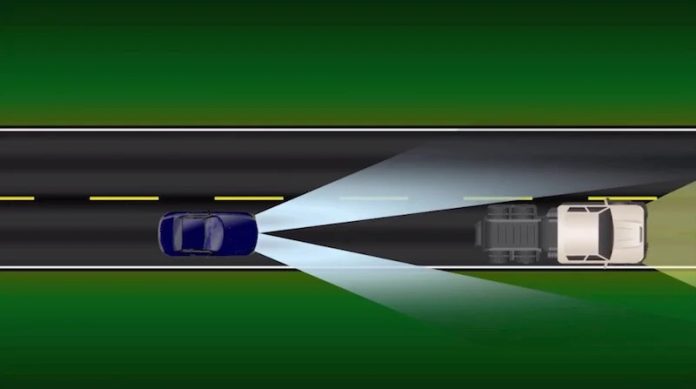In 2023, the global adaptive front lighting market is expected to be worth around US$ 718.4 million. By 2033, the market size is anticipated to surpass US$ 2.37 billion, with demand projected to rise at a CAGR of 12.7% through 2033.
The adaptive front lighting industry is being driven by the increasing demand for improved vehicle safety and driving experience. One of the primary benefits of adaptive front lighting systems is that they provide drivers with better visibility and reduce the risk of accidents. With adaptive front lighting, the headlights pivot in the direction of the vehicle’s steering to illuminate the road ahead, even around curves and corners. This feature allows drivers to see further ahead and react to potential obstacles in real time, improving overall safety on the road.
However, despite the benefits of adaptive front lighting, some restraints may affect the growth of the industry. One of the significant restraints is the high cost associated with adaptive front lighting systems. While the cost of these systems has decreased over time, they remain more expensive than traditional headlights. In addition, there is a lack of standardization for adaptive front lighting systems, which can create confusion for consumers when selecting a product.
Despite the restraints, there are several opportunities for growth in the adaptive front lighting industry. The rise of electric vehicles has opened a new market for adaptive front lighting systems, as these vehicles require energy-efficient lighting solutions. In addition, advancements in technology, such as the integration of artificial intelligence and machine learning, have the potential to improve the performance and efficiency of adaptive front lighting systems.
The latest trends in the adaptive front lighting industry include the development of advanced adaptive front lighting systems with features such as active beam shaping, where the light beam is controlled in real-time to adapt to different driving conditions. There is also a growing focus on customization, with manufacturers offering different lighting modes and color options to cater to individual driver preferences. Overall, the adaptive front lighting industry is poised for continued growth and innovation as manufacturers invest in research and development to improve the performance and features of adaptive front lighting systems.
Key Takeaways:
- Germany had a 7.2% share of the global adaptive front lighting industry in 2022.
- In 2022, total sales in the United States accounted for 20.8% of the global adaptive front lighting industry.
- With a forecast value CAGR of 13.5% from 2023 to 2033, China is poised to emerge as a prominent participant in the adaptive front lighting market.
- From 2023 to 2033, India’s adaptive front lighting industry is predicted to increase at a 14.2% annual pace.
- The demand for adaptive front lighting in the United Kingdom is expected to develop at a value CAGR of 11.5% between 2023 and 2033.
- In 2022, the LIDAR sensor category accounted for 56.7% of the total market.
- The passenger cars segment led the market with a 70.2% share in 2022.
How are Players in Industry Keeping up with the Innovations?
The adaptive front lighting industry is highly competitive, with a large number of players vying for market share. Some of the key players in the market include Hella GmbH & Co. KGaA, Koito Manufacturing Co., Ltd., Stanley Electric Co., Ltd., Valeo SA, and ZKW Group GmbH. These companies have established a strong foothold in the market through their extensive product portfolios, technological advancements, and distribution networks.
These key players are investing heavily in research and development to improve the performance and efficiency of their adaptive front lighting systems. They are also focusing on expanding their product portfolios and offering customized solutions to cater to individual customer needs. In addition, partnerships and collaborations with other players in the value chain, such as automotive manufacturers and suppliers, are helping key players strengthen their market position.
The adaptive front lighting industry also faces several challenges that can influence competition. One of the significant challenges is the increasing demand for energy-efficient lighting solutions. This has led to the development of new technologies such as light-emitting diodes (LEDs) and organic light-emitting diodes (OLEDs). This has intensified the competition among adaptive front lighting manufacturers to develop more energy-efficient and cost-effective solutions.
Key Developments in the Adaptive Front Lighting Market:
- Hella introduced the new Black Magic LED Series in January 2022, which was created specifically for off-road usage.
Valeo SA created a fully adaptable front lighting system in September 2020 to provide a longer and broader field of view in all driving situations.


